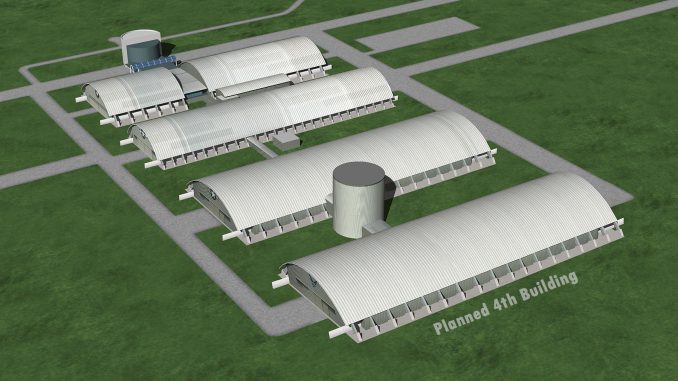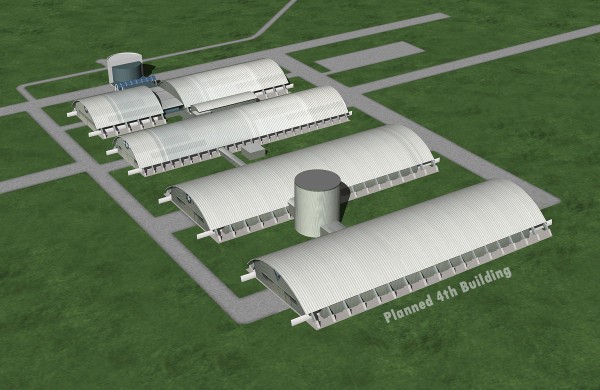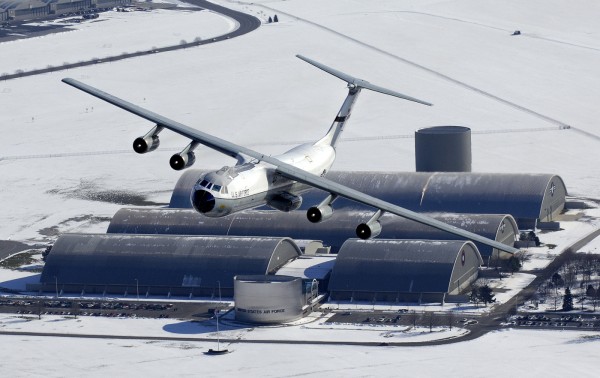

PRESS RELEASE – After a brief delay, the National Museum of the U.S. Air Force’s fourth building is set to proceed.In December 2013, Turner Construction Company of Washington, D.C., was awarded a $35.426 million contract by the U.S. Army Corps of Engineers, Louisville District, to construct a new 224,000 square foot building — similar in size and shape to the museum’s three existing hangars. The contract is being privately financed by the Air Force Museum Foundation, a non-profit organization chartered to assist in the development and expansion of the museum’s facilities.
Another contractor then filed an agency protest on the contract award, which was reviewed by the U.S. Army Corps of Engineers and denied. The notice to proceed was issued to Turner Construction Company effective today.Current plans call for construction to begin in early summer 2014 and be completed in the late summer 2015. The museum will then begin populating the building that fall. A public opening is anticipated in 2016.
Museum Director Lt. Gen. (Ret.) Jack Hudson said he was glad to see that the situation has been resolved and is looking forward to moving ahead with the fourth building. “These kinds of delays can happen sometimes with the government’s contract award process, but the fourth building is critical for us and therefore it is very important to get it right,” said Hudson. “Now we can proceed with the fourth building, which will allow us to share more chapters of the Air Force story with all of our visitors.”
Turner’s Columbus operation, led by Vice President and General Manager Kyle Rooney will take the lead on constructing the museum’s fourth building.“Our project team has been on the standby and in the ready position,” said Rooney. “As the builder of many of our nation’s recognized monuments and museums, we are extremely excited to work with the National Museum of the U.S. Air Force and the U.S. Army Corps of Engineers.”
The museum’s new climate-controlled building, with LEED (Leadership in Energy and Environmental Design) 3.0 Silver certification, will house four major elements of the Air Force story.
The Presidential Aircraft Gallery will allow the museum to relocate and expand one of its most popular galleries, currently located on a controlled-access portion of Wright-Patterson Air Force Base. The fourth building will provide all visitors the opportunity to view this historic collection of presidential aircraft, and walk through four of them, including aircraft used by Presidents Roosevelt, Truman, Eisenhower as well as the Boeing VC-137C also known as SAM (Special Air Mission) 26000, which used by eight presidents — Kennedy, Johnson, Nixon, Ford, Carter, Reagan, George H.W. Bush and Clinton — in addition to carrying heads of state, diplomats and other dignitaries and officials, on many historic journeys.
The Research and Development Gallery will also be relocated from the base and offer visitors the opportunity to view the world’s only remaining XB-70 and other aerospace vehicles. The exotic XB-70 could fly three times the speed of sound and was used as a research aircraft for the advanced study of aerodynamics, propulsion and other subjects. Research and development aerospace vehicles represent advances in technological problem solving and will increase the museum’s opportunities to teach STEM themes and principles.
The new Space Gallery will showcase the Space Shuttle exhibit featuring NASA’s first Crew Compartment Trainer (CCT-1), a high-fidelity representation of a space shuttle crew station used primarily for on-orbit crew training and engineering evaluations. As a major exhibit component of that gallery, visitors will be able to walk onto a full-size representation of a NASA space shuttle payload bay and look inside the CCT-1 cockpit and mid-deck areas. Conceptual plans call for the gallery to also include a Titan IV space launch vehicle, Mercury, Gemini and Apollo spacecraft and many NASA artifacts and a variety of astronaut equipment. A range of satellites and related items will showcase the Air Force’s vast reconnaissance, early warning, communications and other space-based capabilities.

Providing airlift remains a major mission of the USAF and it forms a critical part of the Air Force’s ability to maintain global reach. The Global Reach Gallery will give the opportunity to house large aircraft currently in the museum’s collection, such as the C-141 Hanoi Taxi, which airlifted the first American prisoners of war to freedom from Hanoi, North Vietnam in 1973. The Air Force’s airlift, aeromedical and evacuation missions will also be explained in this gallery.
This press release was published with the permission of United States Air Force Public Affairs Division .For more information, contact Rob Bardua in the National Museum of the United States Air Force Public Affairs Division at (937) 255-1386 or robert.bardua@us.af.mil.

Be the first to comment
Graphic Design, Branding and Aviation Art